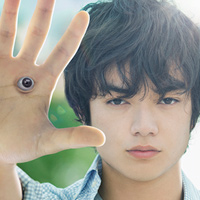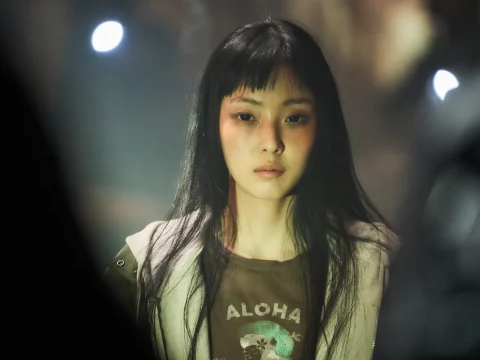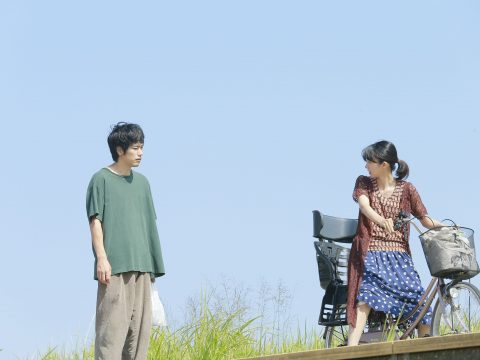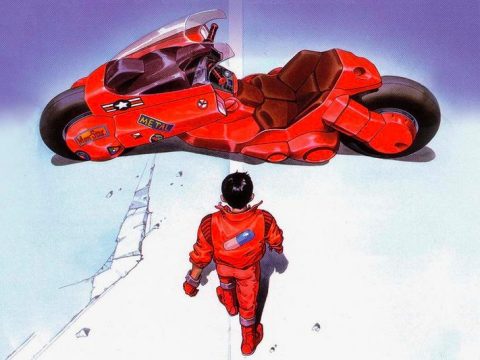
Parasyte is the latest in a long line of films (think Harry Potter, Rurouni Kenshin, etc.) split into two parts, released several months apart. In the case of Parasyte, the first part premiered back last November, while Part 2 hit screens this past weekend.
In theory, these films are win-win. The filmmaker gets double the time to tell their story and the fan gets double the movie.
In theory. But despite behind-the-scenes interviews that might claim otherwise, everyone is well aware that these split films – I’m not talking about honest-to-gosh sequels, mind – are bald-faced money grabs. And while paying for two tickets is bad enough, the real crime is the effect on the narrative, which gets chopped right in half. The film that usually suffers for it is part 2, which jumps straight into the climax with no build-up, unless maybe you’re watching both films back-to-back at home.

That’s exactly the case with Parasyte Part 2 – unlike the first film, which slowly builds its world, has main character Shinichi go through a proper character arc, and even has a decent conclusion, Part 2 is essentially a two-hour finale.
Mild spoilers follow, though there should be no surprises for anyone who’s read the manga or seen the anime.
Shinichi, who at the end of the first film defeated the parasite inhabiting his mother’s body and decided to fight against the parasite invasion, is largely sidelined for the first half or so of the film, as events play out within the parasite camp.

Most of the parasites, who have secretly taken over part of Tokyo’s government, are in favor of killing Shinichi, but their hands are stayed by Reiko Tamura, the substitute teacher-turned-parasite who between films has given birth to her human child. Since becoming a mother, she’s developed almost human-like emotions, but her reasoning behind keeping Shinichi and Migi alive is as an “experiment.”
Meanwhile, the police, who are onto the parasite phenomenon, have developed a method to detect infected people and make their way to the parasite headquarters to attempt to sniff them out.
Shinichi’s main role in the first half of the film is to reveal to a private eye hired by Tamura that she’s not the helpless single mother she seems to be. This sets off a chain reaction of events culminating in Shinichi finally taking a more active role in the second half, when he’s pitted against super-parasite Gotoh (Tadanobu Asano in a pretty thankless role he manages to pull off anyway because he’s Tadanobu Asano).
Shinichi’s final battle ends up being not-quite-final, as the last scene in the film, set several months later, sees the return of an old foe (sort of).
I noted in my review of the first film the full two hours didn’t seem justified, and that goes double for this one. There are scenes of Shinichi and love interest Satomi looking longingly into each others’ eyes that seem to serve no clear purpose rather than – and we return to this theme – padding out the runtime.
But the things I praised about the first film remain true here: the chemistry between Shinichi and his right hand parasite Migi is still great, with quite a few laughs before the film arcs into ultra-serious finale territory in the latter half. The CG is still impressive, and director Takashi Yamazaki stages and cuts fight scenes so you can actually tell what’s happening, an exception in recent action films.
When it’s all said and done, Parasyte’s most interesting character wasn’t main character Shinichi but frenemy Reiko Tamura, who goes from cold-hearted scientist to loving mother and in her final scene makes some astute observations about the relationship between parasites and humans. Who’s worse – the parasites, who prey on humans in order to eat, or humans, who do the same for money?

Related Stories:
– Parasyte (Part 1) Film Review
– Rurouni Kenshin: Kyoto Inferno Review
– [Review] Assassination Classroom Live-action Film
– Princess Jellyfish Live-action Movie Review
– A Brief History of Live-Action Adaptions







